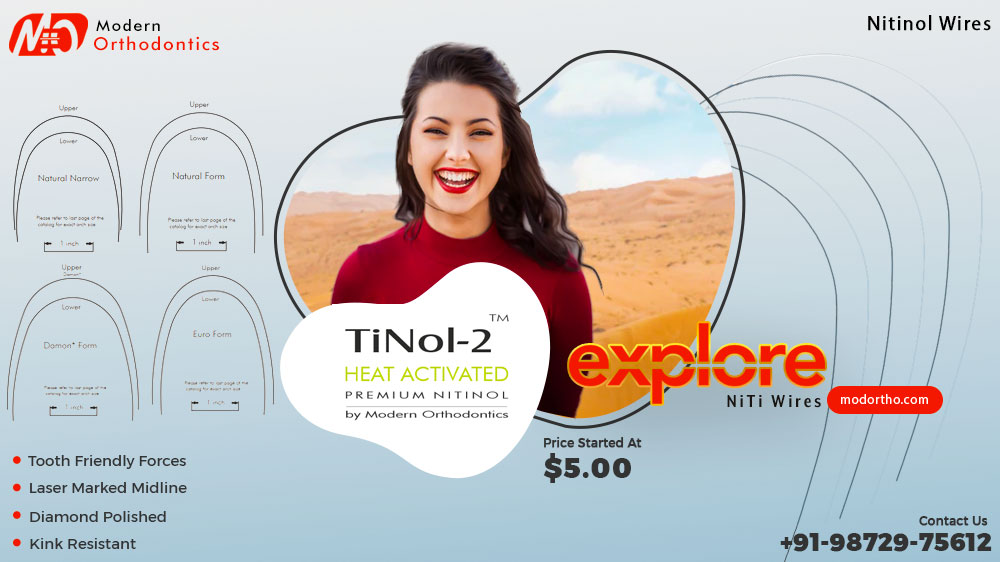Nickel Titanium Arch Wire has been introduced in 1970 and it has increased widely since its introduction. Both the effects of NITI wires, i.e., shape memory and superelasticity, can easily transform themselves from or to the martensitic phase. Transformation can occur by the means of stress or temperature changes. The mechanical properties of NITI wires have contributed to the establishment of long intervals between the appointments and the reduction of the required screening visits. It was developed with the percentage level of 55% Nickel and 45% Titanium and clinically used for the first time in 1972.
Material and Methods
Twenty orthodontic 0.018’ gauge pre-contoured wires were taken and used which were commercialized by six companies and all of them had the same arch shape, i.e., circular or rectangular. Manufacturers informed that the wires were divided into two groups, i.e., superelastic and heat-activated, as per their mechanical properties. Under superelastic NITI wires, the Austenitic structure was obtained during the manufacturing process that is different from the stabilized NITI wires. In heat-activated NITI wires, NITI wires had the additional characteristics of being thermally activable that are responsible for shape memory. 204 types of NITI wires were tested, out of which, 94 were termed as superelastic and 110 as heat-activated wires. The wires were divided into three groups, namely, the IN VIVo group, the IN VITRO group, and the AS RECEIVED group. The technique of secondary electron analysis was used to analyze the roughness of the wire surface. Two samples of each wire subgroup were used to carry out these tests.
Results
Chemical analysis has revealed that all the samples have Nitrogen and Titanium and they have a minor percentage of difference. CuNiTi wires have some amount of copper also in their composition. Oxide is also present on the surface of the analyzed wire. The superelastic NITI wires have low wire surface roughness as compared to the heat-activated NITI wires. The heat-activated NITI wires present the smallest microcavities while the superelastic NITI wires have a ductile fracture with the presence of microcavities.
Conclusion
The NITI wires comprised of Ni and Ti with a small percentage of Al, Ca, and Si. There is also a significant percentage of copper in addition to Ni and Ti. The superelastic NITI wires by Masel and Morelli have the lowest wire surface roughness, while that of Ormco has the greatest wire surface roughness. All the wires have ductile traction that presents the fractured surfaces. CuNiTi wires at 27-degree presented by Ormco and the heat-activated wires by GAC have the smallest microcavities, as compared to the CuNiTi at 35-degree as it has the largest microcavities. CuNiTi wires at 35-degree temperature did not present better characteristics as compared to the other wires on surface and fracture regions. When the superelastic NITI and CuNITI wires were tested, the CuNITI wires at 27-degree temperature presents better super mechanical properties as compared to others as it releases the lower deactivation loadings.


